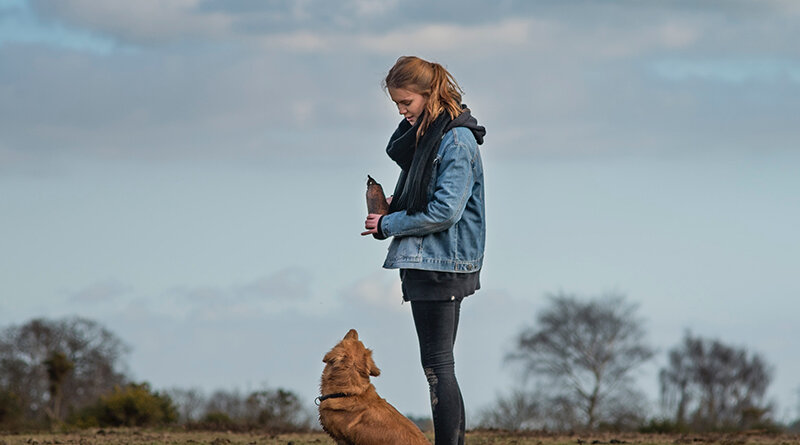Train Your Dog, Train the People in Your Life: Part 2
The skill set of ideas, techniques and strategies used by positive-reinforcement dog trainers is widely applicable to other situations and can easily be used to influence the behavior of many other species (including humans). In her new book, Treat Everyone Like a Dog, Karen B. London, PhD, delves into the ways these skills can be deployed to make life easier for everyone—dogs and people alike.
Part 2 of our discussion with Karen London on her new book, in which she shares her thoughts on consistency and how understanding dogs has helped her understand people.
Bark: In your book, you note the importance of consistency. What do you see as some of the barriers to that, and how do you feel they’re best overcome, or at least, offset?
Karen London: Being consistent is one of those things that’s so simple in theory but so challenging in practice. Because something is simple certainly doesn’t mean it’s easy, and being consistent is a great example.
GET THE BARK IN YOUR INBOX!
Sign up for our newsletter and stay in the know.
The first barrier to being consistent is failing to recognize its importance. Learners experience consistency as knowing what to expect because the rules and consequences don’t change. It makes the process more effective and faster because learners are less apt to become confused. If teachers and trainers were aware of how consistency makes the process easier, they would be more likely to commit to it.
Another barrier is that it takes a lot of organization and planning. That requires both time and energy, especially at the start when systems need to be put in place. Many of the best teachers are also consistent teachers, and students benefit from that. Not coincidentally, they also tend to be the most experienced.
Sometimes, consistency is hard to achieve because it isn’t recognized as a skill in itself. As teachers and trainers, we can work on our own consistency the way we teach any other skill: in a step-by-step way that allows us to have many successes on the road to our eventual goal. Like any other skill worth developing, it takes patience and practice to get really good at it, and for it to feel natural.
B: Would it be fair to say that the more you understood dogs, the more you understood people? Can you draw any parallels between human and canine behavior?
KL: I am trained as an ethologist, which means that my research studies involve the behavior of animals in their natural environments. My studies also typically involve multiple species, often in a comparative manner. I’ve always viewed the similarities and differences between and among animals with great fascination, and it’s completely natural to apply what I’ve learned about one species to others, whether the species of interest are wasps, cats, frogs, sea slugs, grasshoppers, dogs or people.
The principles of learning theory and other aspects of teaching and training apply across all species, so the more I learned by working with dogs, the more I was able to teach people in kinder and more effective ways. Certainly, my professional life has spilled over into my personal life to my own benefit, and to the benefit of those around me.
Perhaps one key area in which understanding dogs made me more understanding toward people relates to empathy. I have become increasingly empathetic to dogs and the challenges they face when being taught and trained, and that made me increasingly empathetic to people when it came to their behavior and their learning. Watching people train dogs in ways that are confusing or ineffective filled me with sympathy for dogs who were unable to succeed through no fault of their own.
Mentally, I tend to lump learners of all species into one big bin, and that makes me aware of the way they are treated and viewed by those teaching them. When someone comments on a dog in a less-than-positive way, I’m quick to see the dog’s point of view and apply that to my perspective of people as well.
For example, a friend’s dog, Roxy, loves other dogs so much that little else matters to her when she sees one. One day, I was walking Roxy and we saw another dog approaching us on a side trail. The owner of the other dog stopped to let us go by, but Roxy wasn’t interested in continuing on our way. She sat down and quite politely waited. I tried to call her away, and even jumped and ran a step or two to encourage her to come with me, but she remained where she was, seated and waiting for an opportunity to greet her next best friend. The other person said, “Boy, is she ever stubborn!” I smiled at the remark but didn’t agree with it.
Soon, I was able to lure Roxy away with some treats, followed by a chase game; we then continued our walk. I didn’t consider the issue to be related to being stubborn at all. Roxy and I simply had different desires at that moment. Since the other person clearly didn’t want the two dogs to greet, I wanted to continue on our walk. Roxy, on the other hand, wanted to remain where we were, presumably with the hope of greeting a new dog.
Roxy and I were on equal footing but had different preferences, and we were each communicating what we wanted to do while being aware that we were not in accord on those goals. That’s not being stubborn, which I consider to be refusing to change one’s views or opinions despite good reasons or arguments to do so. Similarly, when people have strong views or preferences, I realize that they’re worth considering rather than labeling them with a word that has negative connotations simply because we aren’t in agreement.
I see parallels between canine and human behavior all the time, especially in our fascination with play. Play behavior doesn’t occur in all species and is not that common throughout the animal kingdom, but it’s so important to both dogs and people. I think my obsession with play in animals results in part from seeing the way our two species play together, which is a true biological wonder that never ceases to give me joy.
One of my soap boxes is that play is underutilized in influencing behavior. I have been writing and speaking about the importance of play to dogs
More to come in Part 3 …





